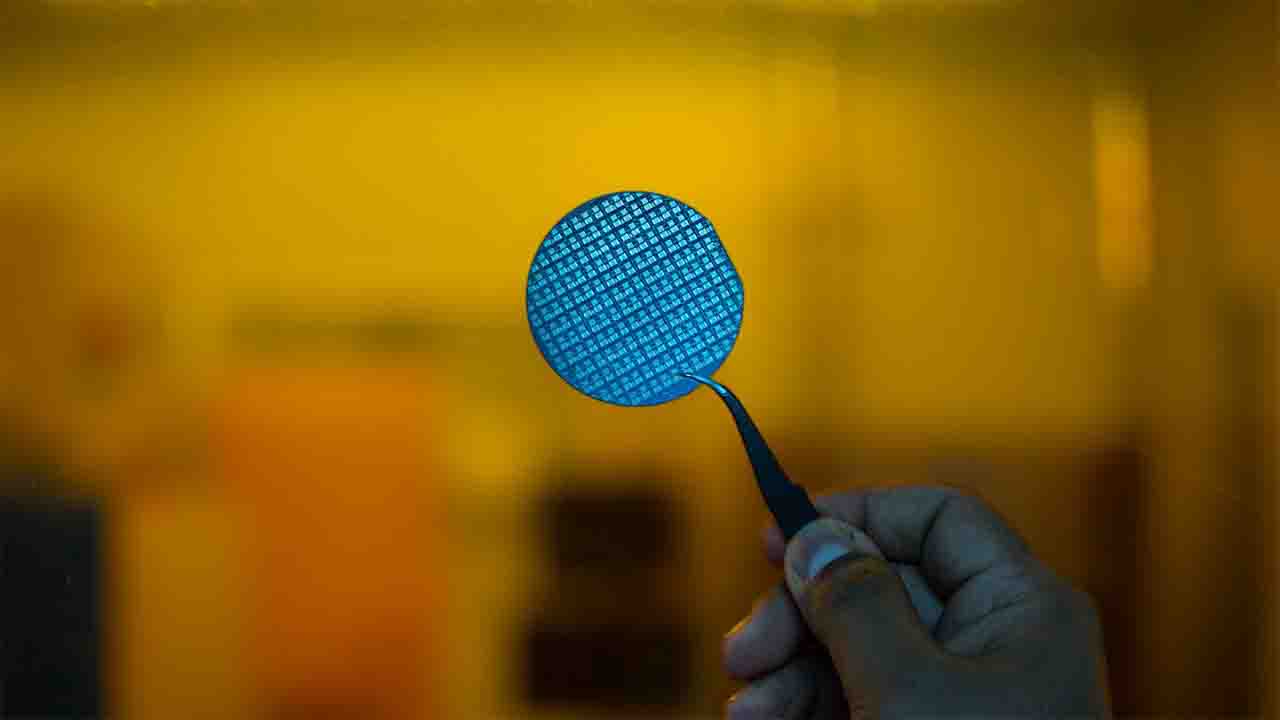Science & Technology, India (Commonwealth Union) – Scientists at the Indian Institute of Science (IISc) have successfully engineered a fully homegrown gallium nitride (GaN) power switch, unlocking its potential for a wide array of applications, including power converters for electric vehicles and laptops, as well as bolstering wireless communications systems. The entire developmental journey of this switch, spanning from material cultivation to device creation and packaging, was meticulously accomplished within the confines of the Centre for Nano Science and Engineering (CeNSE) at IISc.
Gallium nitride (GaN) transistors have surged to the forefront due to their remarkable performance and efficiency, poised to supplant conventional silicon-based transistors. They are rapidly becoming the foundational components in a diverse range of electronic devices, including lightning-fast chargers for electric vehicles, smartphones, and laptops. Furthermore, GaN transistors find extensive application in demanding sectors such as space technology and military endeavors, specifically in systems like radar.
“It is a very promising and disruptive technology,” said Digbijoy Nath, Associate Professor at CeNSE who is also corresponding author of the study that appeared in Microelectronic Engineering. “But the material and devices are heavily import-restricted … We don’t have gallium nitride wafer production capability at commercial scale in India yet.” He further indicated that the know-how of manufacturing the devices is a heavily-guarded secret as well with few studies published on the details of the procedure that is carried out.
Power switches play a pivotal role in regulating the power supply to electronic devices, essentially functioning as a means to activate or deactivate these devices. In the creation of the Gallium Nitride (GaN) power switch, the team at the Indian Institute of Science (IISc) harnessed a metal-organic chemical vapor deposition technique that had been honed and perfected over a decade under the guidance of Professor Srinivasan Raghavan, who chairs the CeNSE. This intricate method entails the gradual growth of GaN alloy crystals layer by layer on a two-inch silicon wafer, resulting in the fabrication of a multi-layered transistor.
Precision is paramount throughout this process, necessitating a meticulously controlled environment within a clean room to mitigate the risk of defects arising due to environmental factors such as humidity and temperature. These factors could potentially impact the performance of the device. Additionally, the research team collaborated with Kaushik Basu, an Associate Professor in the Department of Electrical Engineering (EE), and his laboratory to construct an electrical circuit utilizing these transistors and assess their switching capabilities.
GaN transistors typically function in a mode referred to as “depletion mode,” meaning they remain active continuously unless subjected to a negative voltage to switch them off. However, power switches employed in chargers and adapters must operate inversely – they should remain inactive, devoid of current flow, and activate only when a positive voltage is applied, a condition known as “enhancement mode.” To achieve this desired functionality, the team ingeniously combined the GaN transistor with a commercially available silicon transistor, ensuring that the device remains quiescent by default and activates only when prompted by the application of a positive voltage.
The development of the device’s packaging was also accomplished idegenously, as indicated by Rijo Baby, a doctoral student at CeNSE and the primary author of the research. Following the packaging phase and comprehensive testing, the team observed that the device exhibited performance levels on par with commercially available state-of-the-art switches. It achieved an impressive switching time of approximately 50 nanoseconds, swiftly transitioning between the “on” and “off” states.
As they move forward, the researchers have ambitious plans. They intend to scale up the device’s dimensions to enable it to handle higher current levels. Simultaneously, they are envisioning the creation of a power converter capable of either stepping up or stepping down voltages, further expanding the device’s versatility and potential applications.








